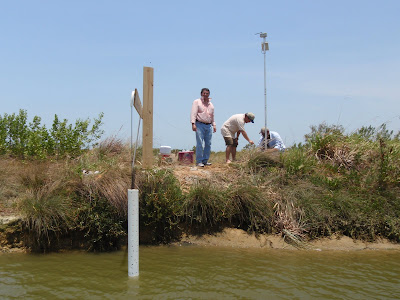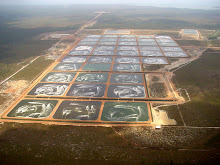
Here we are all heading out to the installation site.
Here Jon Thomas of In Situ demonstrates how to calibrate the water quality probe as Kendrick Gordon of Belize Department of Environment (left) and Jose Vasquez of WWF (on the right) look on.

Arnold Lara of Adcon works on the satellite uplink as community researcher as WWF representative Mauricio Mejia looks on.

And the finished system is ready to roll. We'll be watching the probe over the next few weeks and documenting the effects of efforts to improve water quality at the farms.

Progress!!






